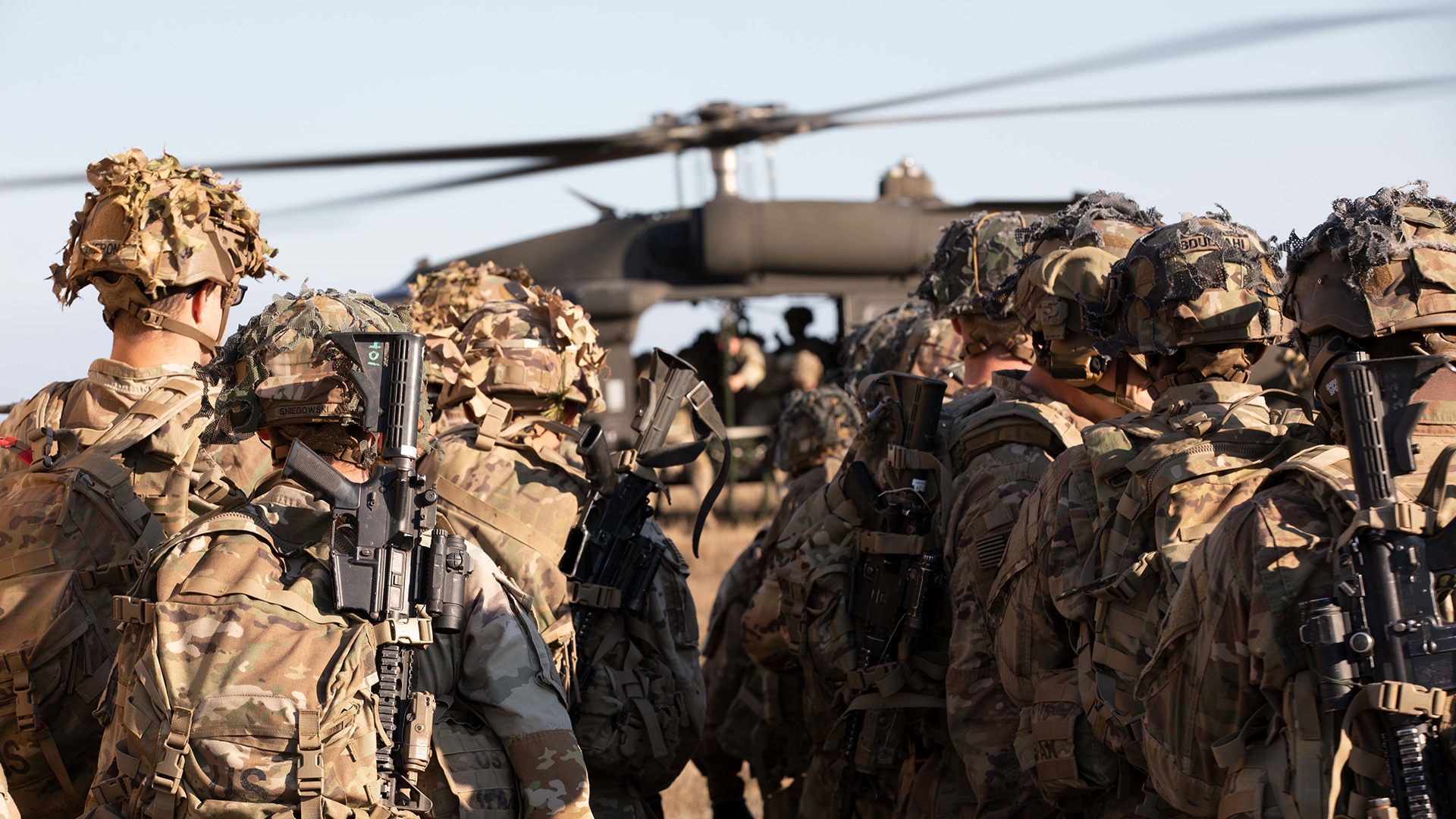

The Army is showing no signs of curtailing its deployments to Europe as the war in Ukraine continues to grind on.
On Wednesday the Army announced that about 3,400 soldiers with the 101st Airborne Division’s 3rd Infantry Brigade Combat Team will head to Eastern Europe this fall, as will 200 soldiers from the 82nd Airborne Division Headquarters.
The units will deploy primarily to Romania as well in Southeastern Europe and to the continent’s “High North” region that includes Scandinavian countries, Army officials said.
Among the 101st troops are infantry units from the division’s stories 187th Infantry Regiment, known as the Rakkasans.
“We look forward to the return of the 82nd Airborne Division to the continent, and to the Rakkasan’s next ‘rendezvous with destiny,’ which follows the back-to-back deployments of their storied division’s two other infantry brigade combat teams,” Army Col. Martin O’Donnell, a spokesman for U.S. Army Europe, said in a statement.
The brigade from the 101st Airborne will replace the division’s 1st Infantry Brigade Combat Team. The 82nd Airborne troops will replace a similar unit from the 10th Mountain Division, an Army news release says.
Subscribe to Task & Purpose Today. Get the latest military news and culture in your inbox daily.
“During the upcoming deployments, these disciplined airborne and air assault units, just like the 10th Mountain Division and 1st Infantry Brigade Combat Team, 101st Airborne Division before them, will build allied competency and increase interoperability, and improve their combat readiness and warfighting abilities,” O’Donnell said.

NBC News reported on Sept. 1 that Pentagon officials were debating whether to backfill both the 10th Mountain Division Headquarters and 1st Infantry Brigade Combat Team, 101st Airborne Division.
Ultimately, U.S. military leaders decided to replace the two units, said Army Maj. Charlie Dietz, a Pentagon spokesman.
“This is part of our regular evaluation process,” Dietz told Task & Purpose on Thursday. “The department is always reviewing our force positions worldwide, taking into account the dynamic global security environment. Rotating or backfilling units is standard for us to ensure our forces are best positioned to meet any challenges. Our commitment to the safety and stability of Europe remains unwavering, and these decisions are just a reflection of us doing our job, making sure we’re always ready and where we need to be.”
The deployments will not increase the U.S. military’s presence on the continent, but holding that number steady with unit rotations signals that the United States continues to be committed to the region, said Marta Kepe, a senior defense analyst with the RAND Corporation.
“The rotation also indicates that the U.S. has both the political will and the military capability to carry out force rotations in Europe,” Kepe told Task & Purpose. “It may also indicate that in case of necessity, the U.S. could be able to support a longer overlap of rotating forces in there.”
Overall U.S. force levels in Europe have vacillated between about 80,000 and 105,000 over the past two years, depending on military exercises and the arrival and departure of units. About 85,000 U.S. troops are assigned or deployed to Europe, an increase of about 20,000 troops on the continent since Russia launched its invasion of Ukraine in February 2022.
About 4,500 soldiers with the Army’s 3rd Infantry Division began deploying earlier this month to Poland, Latvia, Lithuania, and Estonia.
Even with the post-invasion increase, the number of American service members on the continent is still far below force levels toward the end of the Cold War, when about 300,000 U.S. troops were stationed in Europe.
In addition to waging war in Ukraine, Russian President Vladimir Putin has been using proxies to promote conflicts elsewhere in Europe, such as in Moldova and Kosovo, said Ivana Stradner, a Russia expert with the Foundation for the Defense of Democracies think tank in Washington, D.C.
Putin’s goal is to continue to test NATO’s red lines to make the alliance look like a paper tiger, Stradner told Task & Purpose.
The U.S. military’s decision to maintain force posture in Europe is a show of resolve from the West amid waning political support for Ukraine in the United States and Europe, she said.
“This will not provoke Russia, as some people claim,” Stradner said. “On the contrary: Russia only understands force. Kindness is weakness, and weakness provokes people like Putin.”
UPDATE: 09/21/203; this story was updated with comments from Army Maj. Charlie Dietz, a Pentagon spokesman.
The latest on Task & Purpose
- How a Native Alaskan became a legendary Navy SEAL
- Military secrets leaked on ‘War Thunder’ forums yet again
- US Navy decommissions another littoral combat ship, the USS Milwaukee
- Who will be the president’s top military adviser after Gen. Milley retires?
- 4,500 3rd Infantry Division soldiers deploying to Eastern Europe